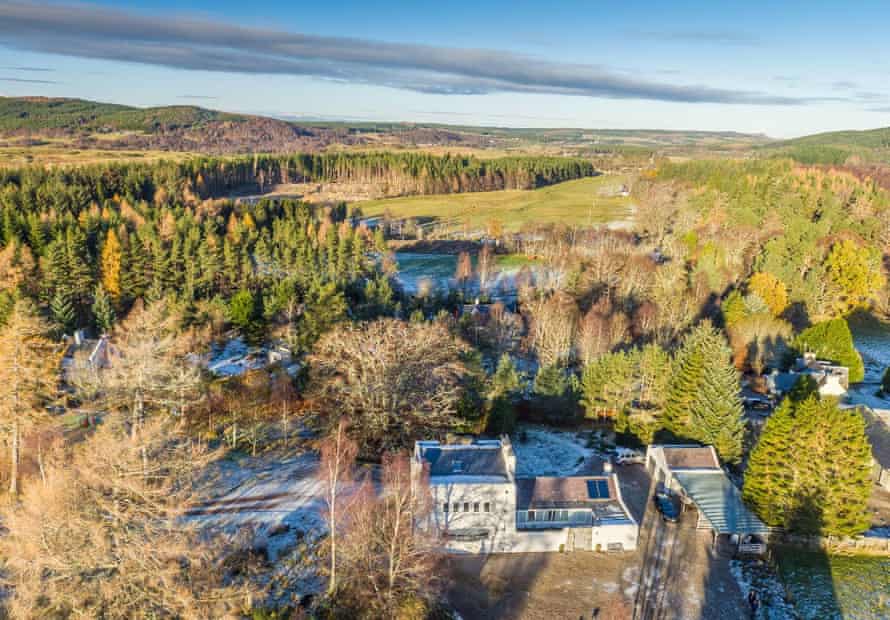I’d normally expect to find a pint of milk and slice or two of cake on arrival at a holiday home. But the welcome pack awaiting me at Orchard Cottage, on the Rodd Estate in Herefordshire, contains a more unusual item – a DVD about the man who once lived here, the artist Sidney Nolan.
I abandon the unpacking, set a fire in the woodburner in the sitting room, and start watching the documentary. It tells the story of Nolan’s progress from untutored artist in his native Australia to one of the hottest prospects on the international art scene in the mid-1950s, and his eventual arrival at the Rodd. He lived here from 1983, continuing to push the boundaries of his art until his death aged 75 in 1992.

Nolan was captivated by the Rodd’s setting in the Hindwell valley in the Welsh Marches. He said the place reminded him of the Australian bush, particularly the view from the end of the drive across the meadows to the hills beyond, on which a blue haze sometimes settles on a summer’s evening. I’m visiting in early spring (2020, pre-Covid) and March’s watery clouds are weighing heavy on the scene – but there’s a primal feeling to this open terrain that hasn’t been numbed by man shaping fields and releasing livestock to mow the grass.
I drag the dog away from sniffing after the previous night’s nocturnal visitors to the wild patch of ground around the cottage that has been fashioned into a garden. We step into the landscape, striking out across the fields and slopping our way up a muddy hill into Rodd Wood. While the dog fills her snout once more with the scents of now-slumbering creatures, I survey the pastures below through the barely budding branches of oak, beech and sweet chestnut and listen hard for a sound. Silence.
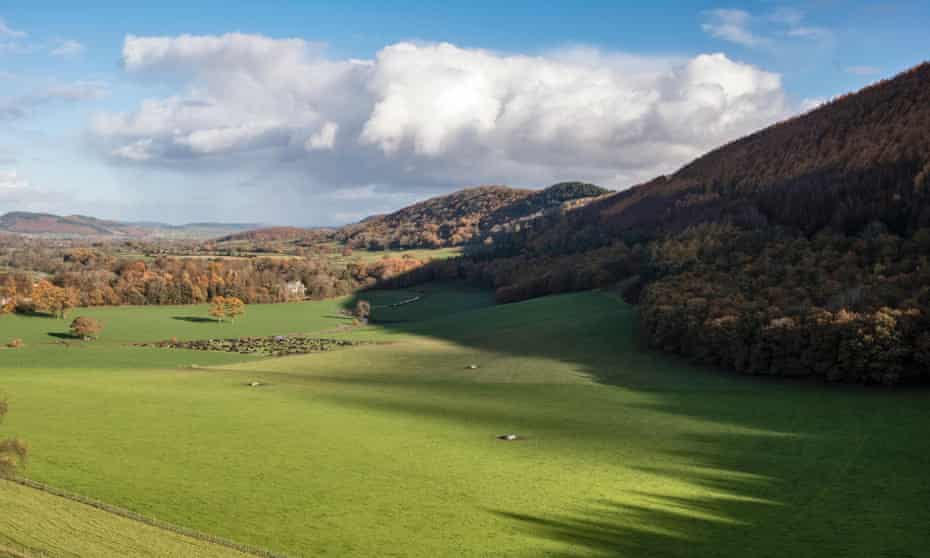
I wallow in this solitude for the weekend. I know that if I want to venture further, the book town Hay-on-Wye, foodie Ludlow, and the north-east gateway to the Brecon Beacons are all no more than 20 miles away. A 15-minute drive would take me to Offa’s Dyke. Yet, I foray only as far as Presteigne, a buzzy little town barely a mile down the road from this noiseless place, just across the meandering Welsh border. Trade is swift in the deli, fishmonger and butcher on this pre-pandemic weekend, but I’ll be making light work of the cottage’s handsome kitchen because the menus at nearby pubs The Stagg at Titley and The Harp at Old Radnor have proved too tempting.
For me, Orchard Cottage is a place to just be. In the mornings, I linger in the sunroom that fills with light, even on this grey weekend, writing at the desk, pausing occasionally to stare through the wall of windows and seek inspiration from the untamed garden. This cottage is becoming popular with artists, I’ve been told, who use the sunroom as a studio. It’s fitting: Nolan wanted to establish a centre for the arts here, inspired by what his friend Benjamin Britten had achieved at Snape Maltings in Suffolk.
Nolan’s legacy is everywhere to see in the cottage. There is a selection of books from his vast library – fiction, biography, art, philosophy, poetry and travel – and prints hanging on the walls made by the artist himself. There are works from the “Dust” series – graphic studies of the outback’s scorched savannah and its petrified animal corpses – and his paintings about Ned Kelly. Nolan became famous for his recurring image of the outlaw’s black square helmet and armour set against richly coloured evocations of the Australian landscape. My favourite, in the bedroom, shows the menacing bulk of the black-clad, gun-toting bushranger on his steed against the fragile golden shimmer of the sunbaked earth.
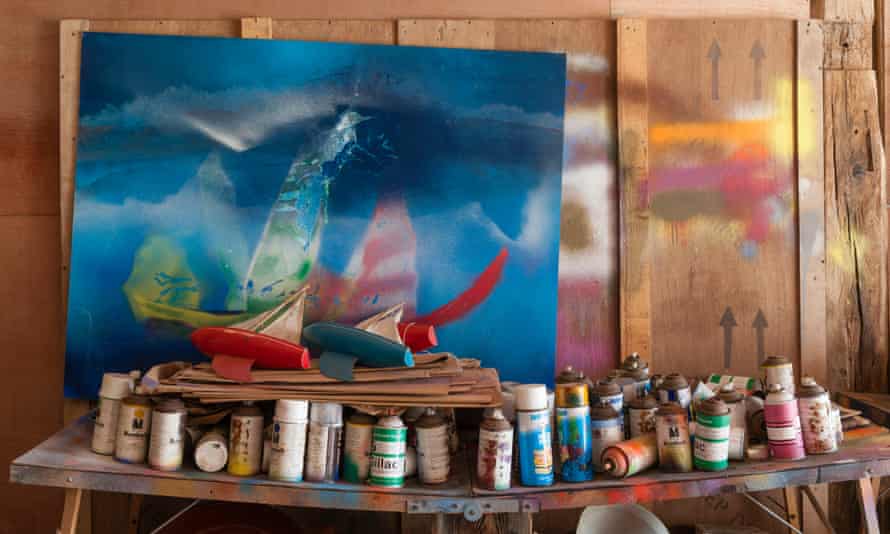
While the estate is all mine for the weekend, I’m only able to nose around the outside of the buildings surrounding the cottage: Rodd Court, the Jacobean mansion where Nolan lived; a cluster of 17th-century barns; some modern outbuildings, which discarded art materials signal are used for creative activity; and, beyond the gate to the field, a farm where Nolan bred Welsh black cattle. But on Monday morning, the team that runs the Sidney Nolan Trust returns to work in one of the historic barns and I’m invited on a private tour to delve a little deeper.
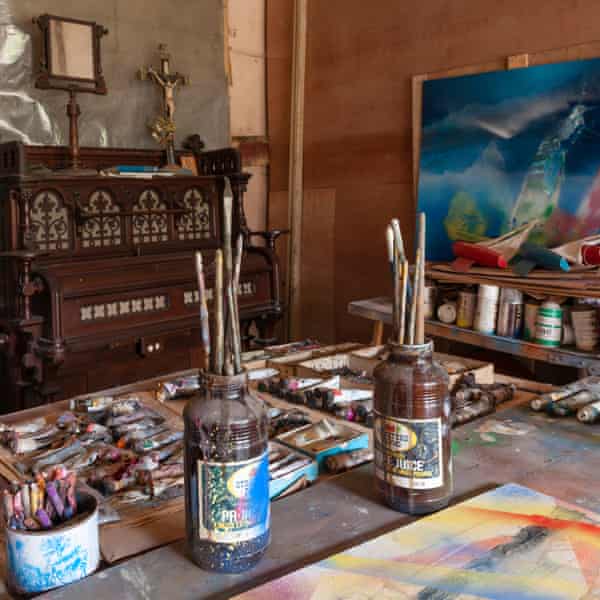
“It’s a busy job looking after Nolan’s legacy,” explains my guide, Andrew. The Trust opens the estate to the public from April to September, runs group tours, workshops for schoolchildren, cultural exchanges for international artists, summer camps for art colleges, and occasional public courses on printmaking, the money from which, along with funds from the cottage, is invested in the trust’s educational and creative programme. Now, private tours for guests at Orchard Cottage are also laid on.
We step inside Rodd Court and walk about its ramshackle rooms.
“We’re not a National Trust property where every corner has been polished,” Andrew explains, “we love the spirit of this place, it’s hardly been touched.” This is more a narrative than a visual tour, about the history of the house and Nolan’s interaction with it, though there are signs of his life in the stacks of books, paper and paint, and a hoard of rosettes from cattle shows. The mansion’s own curios include original hearths, a rare example of a manservant’s closet bed, and, on the ceiling of Nolan’s morning room, elaborate Tudor plasterwork.
One room has been commandeered for an audit of Nolan’s work with the Quantel Paintbox, a 1980s computer graphics workstation for the TV industry. “He loved what technology could do for art,” says Andrew. Drawers burst with his Quantel experiments; Nolan was clearly consumed by his new method of cutting and pasting images on top of each other, then drenching them with colour. We unpick one of these collages with our eyes. Within the psychedelic swirl, an image of trees has been overlaid with a picture of a mermaid, yet the apparently disjointed elements harmonise as a fresh new creation. “Had he been alive in this digital age, he’d have been all over it,” says Andrew.
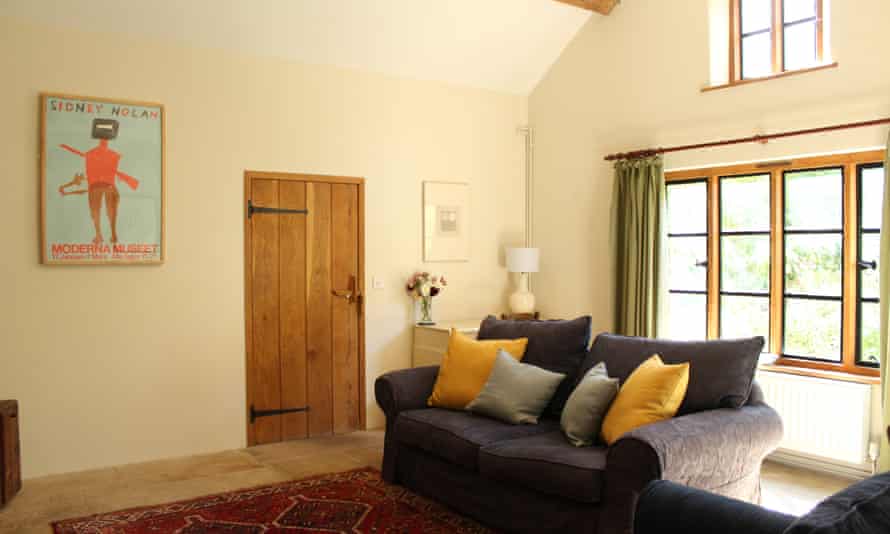
More of Nolan’s work will go on public show this summer in a barn that has been turned into a gallery. Nolan à l’Atelier will explore the creative influence of the time he spent in Paris with the English printmaker Stanley William Hayter, while Colour of the Sky will display some of an extensive body of work Nolan created in the winter of 1962, just before a trip to Auschwitz, and photographs he took during the visit.
Next to the barn gallery is Nolan’s studio, where he experimented with subject matter, techniques and materials up to a few days before he died. Here he applied car spray paint, commercial paint, and PVA glue mixed with pigments to huge canvases while he was suspended from the ceiling, creating explosions of colour that lie somewhere between graffiti art and abstract landscape painting. I must stand behind a rope barrier at the entrance to view the scene, preserved just as Nolan left it nearly 30 years ago. The central workplace, set with props including a crucifix and toy boats, is hemmed in by shelves crammed with paint pots and canisters. The toxic smell still lingers in the air. But then, a short break at The Rodd is a sensory experience.
The Sidney Nolan Trust reopens on 21 May 2021. Orchard Cottage is open for bookings (sleeps two, plus one well-behaved dog). From £365 for three-night weekend and four-night midweek stays, and from £565 for seven-night stays
This summer’s exhibitions include Nolan à l’Atelier, 21 May-8 August, Colour of the Sky, 13 August-26 September, and a new body of work by the artist Simon Dorrell, from 21 May onwards, sidneynolantrust.org
Five more artistic retreats
The Laura Knight Studio, Staithes, North Yorkshire

The artists Laura and Harold Knight, members of the Staithes Group, used this cottage as a studio in the early 1900s. They walked from their home in nearby Roxby every day to paint, inspired by the cliffs, sea, cottages and fisherfolk, and the quality of the light. But the cottage predates them: once a stable and forge, with ship’s timber beams and thick stone walls. Today, it is a simple holiday cottage. There is an open-plan living room/kitchen with a woodburner; a cosy “bed deck” with a double mattress; and a bathroom with a cast-iron bath. The futon makes another double bed (£10pp for extra guests). There is plenty of room for painting, including on a small patio overlooking Staithes Beck. The cottage is in the centre of the village, right behind the Staithes Gallery, which runs painting weekends.
From £60 a night or £420 a week for two, staithesgallery.co.uk
Time on the Brush, Tewkesbury, Gloucestershire
Guests can live a real artist’s life here. Upstairs, there is a one-bedroom apartment with artistic touches such as a hanging decoration of the stages of the moon in the bathroom, a floral mural in the bedroom and a cosy reading corner. But the real gem is the downstairs studio and gallery, which comes with the rental. This can be used as a private art studio, or guests can open up the gallery as a shop to sell their work – there is a display window out on to Barton Street, one of Tewkesbury’s three main streets. The property is a short walk to the river and is surrounded by cafes and restaurants. The business is the brainchild of Sam Morris, an artist who runs workshops on how to paint cows, dogs and giraffes.
From £409 a week, samantha-morris.com
The Lobster Pot and Strand Line, Porthcothan, Cornwall
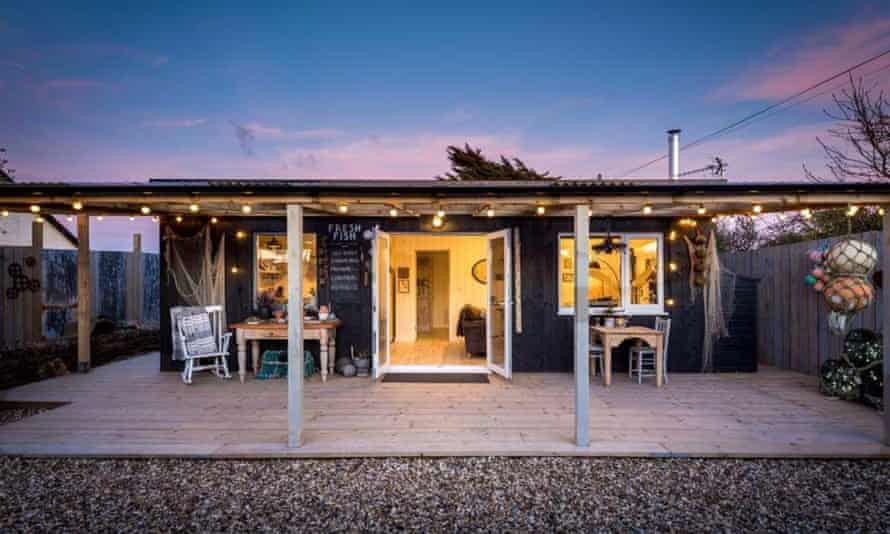
The Cornish artist Susie Ray and her husband, Ollie, have created two rustic but luxurious-feeling cabins next to her studio near Porthcothan in north Cornwall. The Lobster Pot sleeps two and the Strand Line sleeps four; both have open-plan kitchen/living areas with woodburners, plus super-king-size beds, deep baths and Derek Jarman-themed gardens. The gardens have outdoor kitchens with gas barbecues and la plancha grills, plus tables and chairs, benches and rocking chairs. The cabins are filled with items Susie has foraged on the seashore and repurposed. They are within a 20-minute drive of 11 beaches, including Portcothan, a mile away. Guests can book a fish-rubbing, painting or craft workshop with Susie.
From £426 a week (Lobster Pot) or £514 (Strand Line)
The Artist’s House, Deal, Kent
This one-bedroom cottage is owned by the artist and designer Steve Thomas (who lives next door), best known for his interior and graphic designs for Biba. The whitewashed cottage, on a quiet mews in Deal’s conservation area, is a riot of colour inside. It is flooded with light from a huge skylight and crammed with paintings, prints, sculptures and books. There is a large, open-plan living room and kitchen downstairs, and a bedroom, bathroom and gallery upstairs, with furniture by Ron Arad, Charles Eames and Hans Wegner. Children are welcome to sleep on a blow-up bed in the spacious bedroom. It is a short stroll to Deal’s beach, shops, bars and restaurants.
From £485 for seven nights, sleeps two, keeperscottages.co.uk
The Artist’s Cottage, Farr, Highlands
